We’re lucky to have Karl Schulmeisters’ observations from St. Malo, and he was lucky to be there for the start of an amazing event!
The first big difference between high profile sailing events in the USA and France is simple and vital: In the US the venue is set up for the sailors, in France the venue is chosen for it’s appeal to sponsors, tourism boards and public appeal. The result is that they become huge events.
For the Route de Rhum this was the old/rebuilt port of St. Malo even though the starting line was a good 10 nautical miles away. For those who don’t know St. Malo – it’s one of the ferry ports between England and France as well as France and Guernsey. Like all French ports on “La Manche” (they don’t call it The English Channel for some odd reason) there is a serious issue with tides and keeping the port navigable. So even though it’s a cargo port and hence “deep wate,r” they manage it with three large Basins big enough for cargo ships to come into via locks.
So you have this gorgeous Middle Ages city that later became a pirate base and was eventually destroyed during WWII and subsequently rebuilt. And it sits on this craggy point and overlooks three large deepwater pools (http://www.saint-malo-tourisme.co.uk/) that have lock gates between them.
Click on any of Karl’s photos to enlarge or view a slideshow.
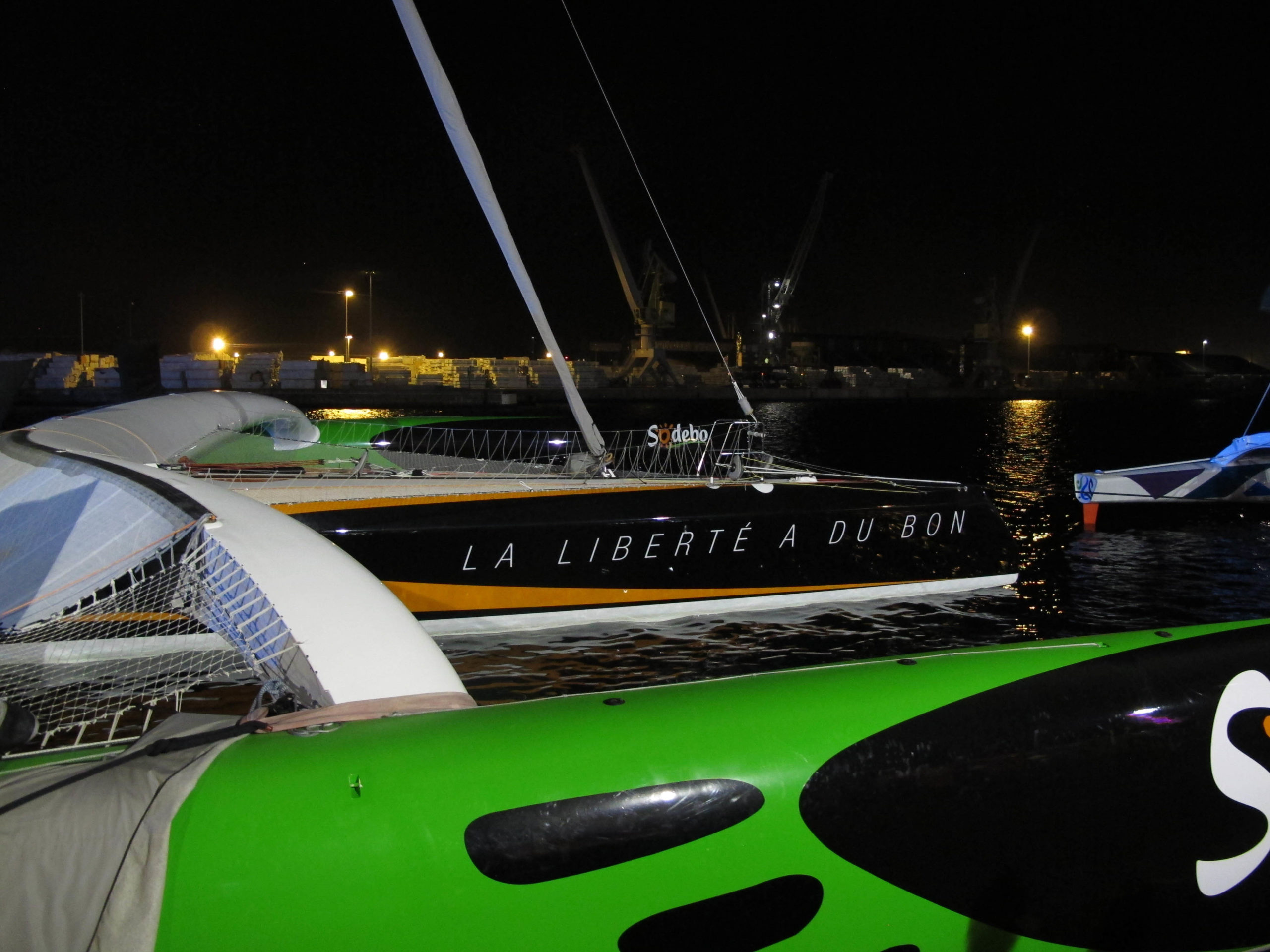
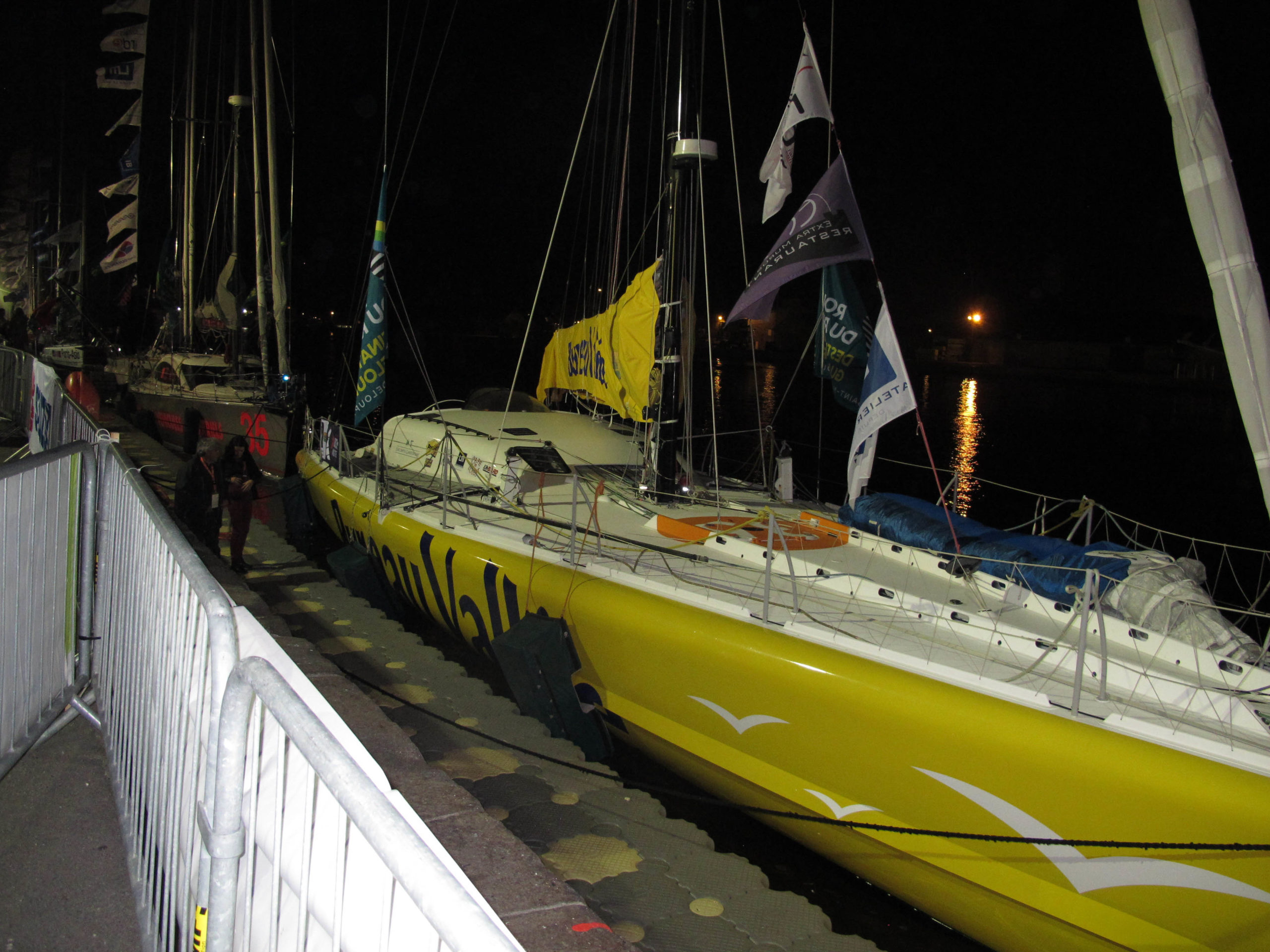
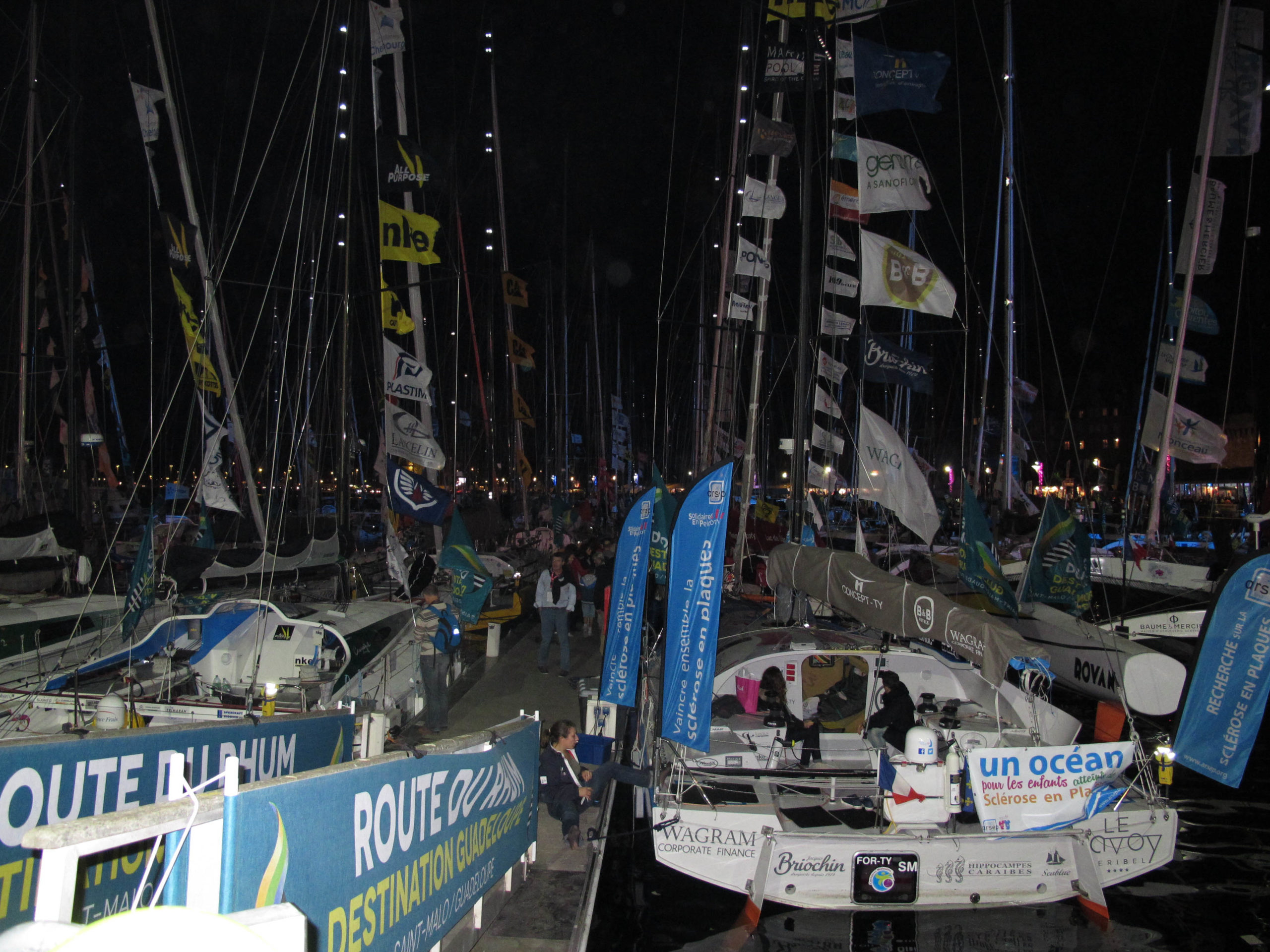
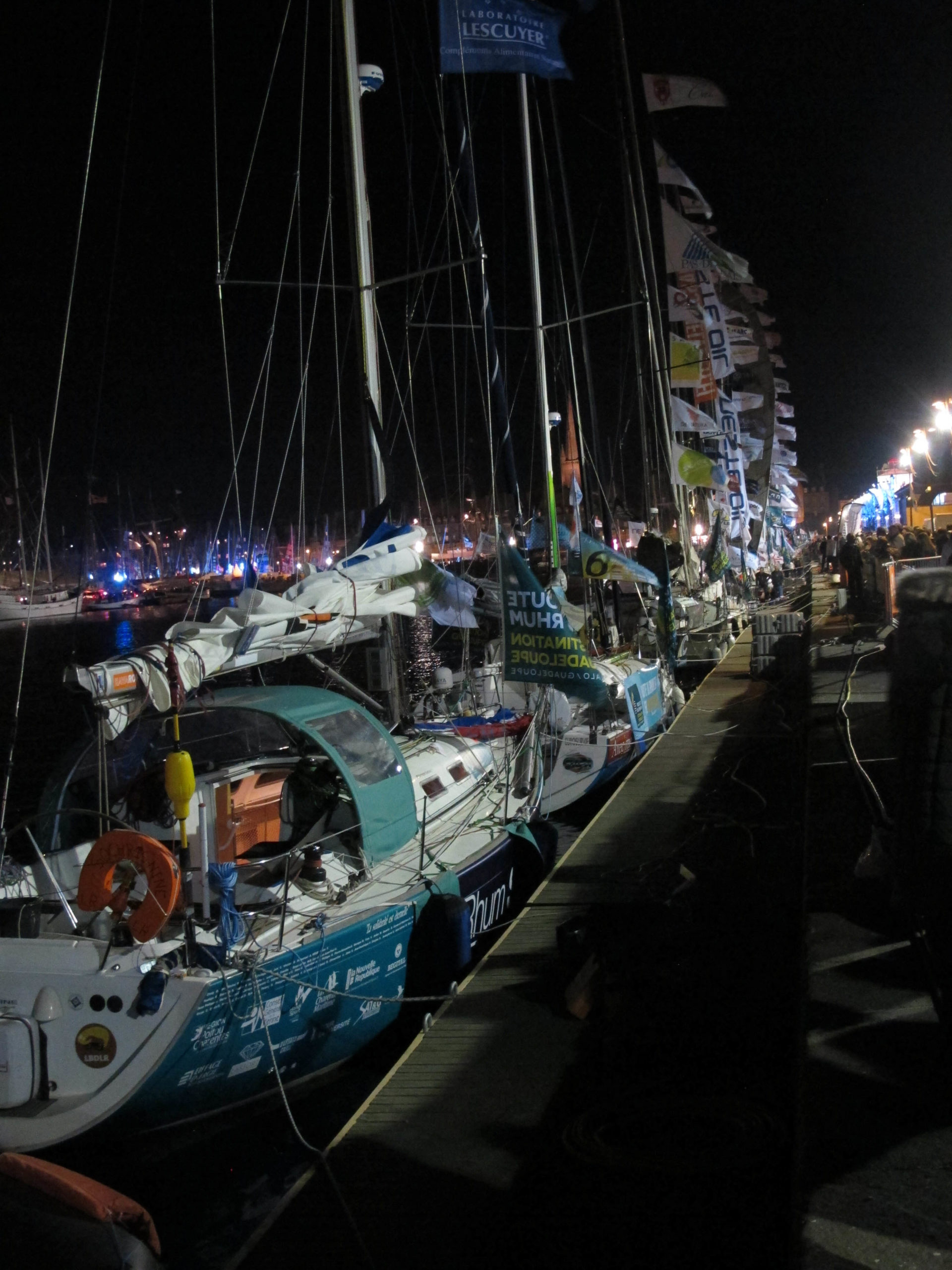
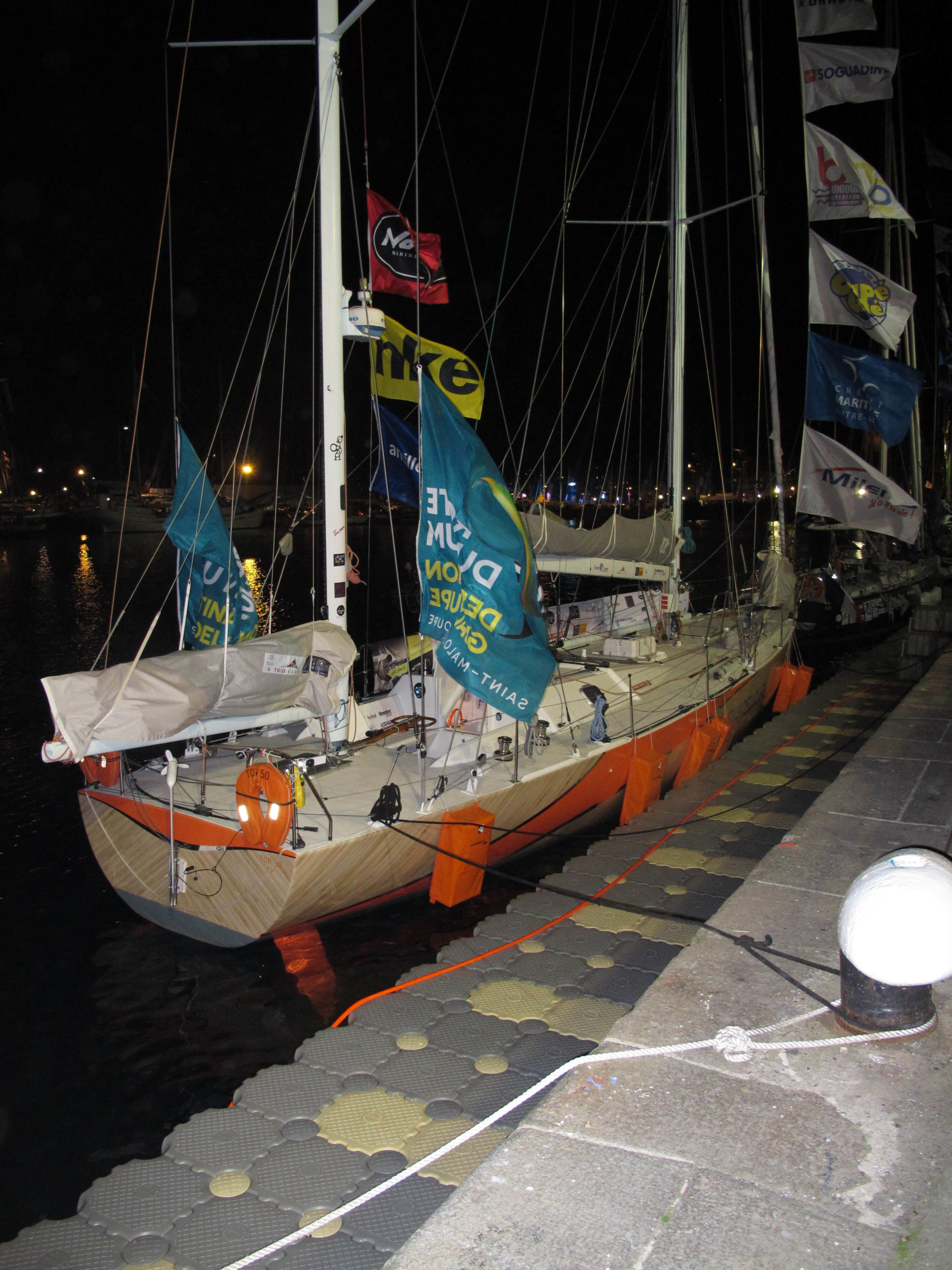
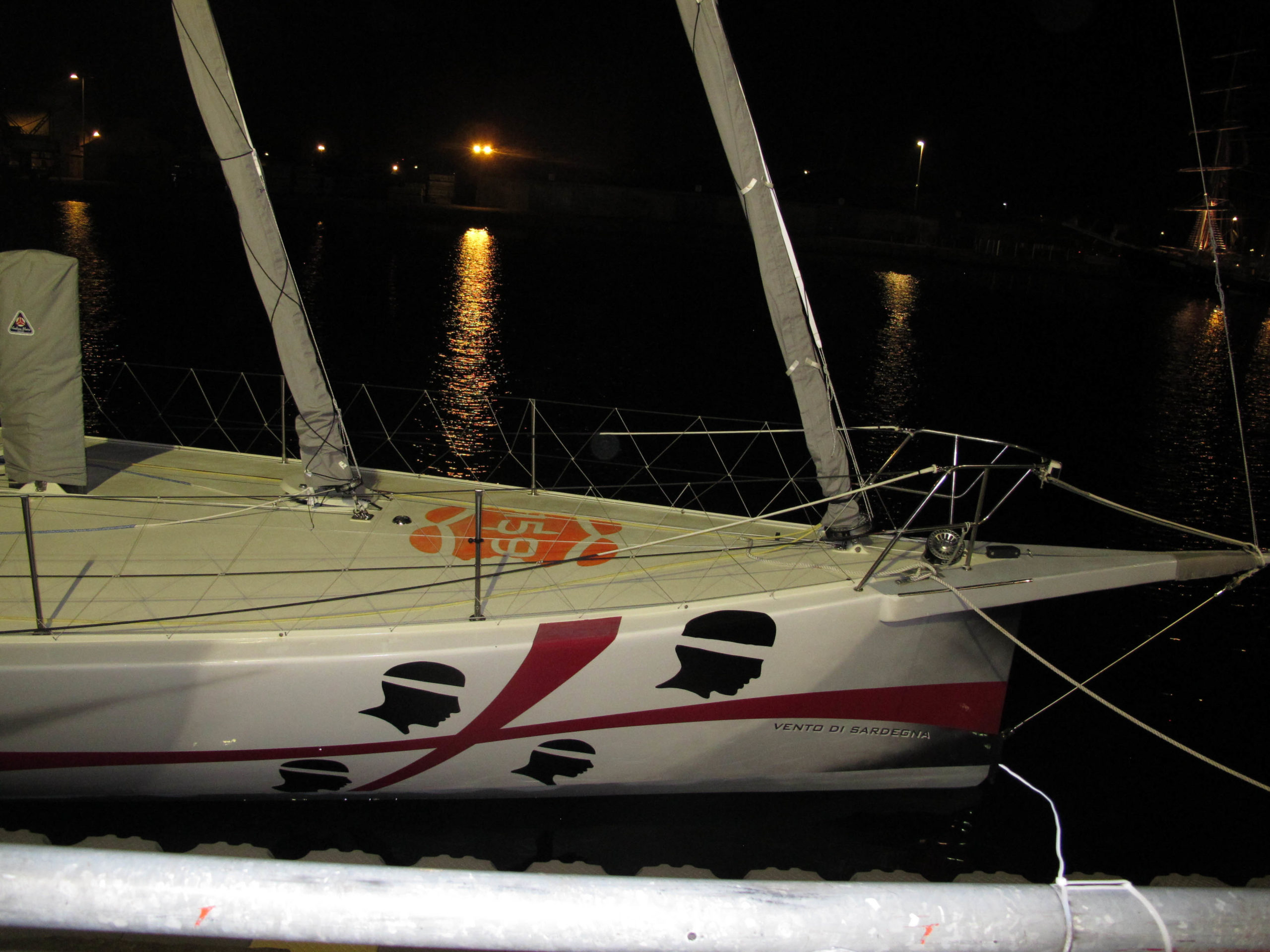
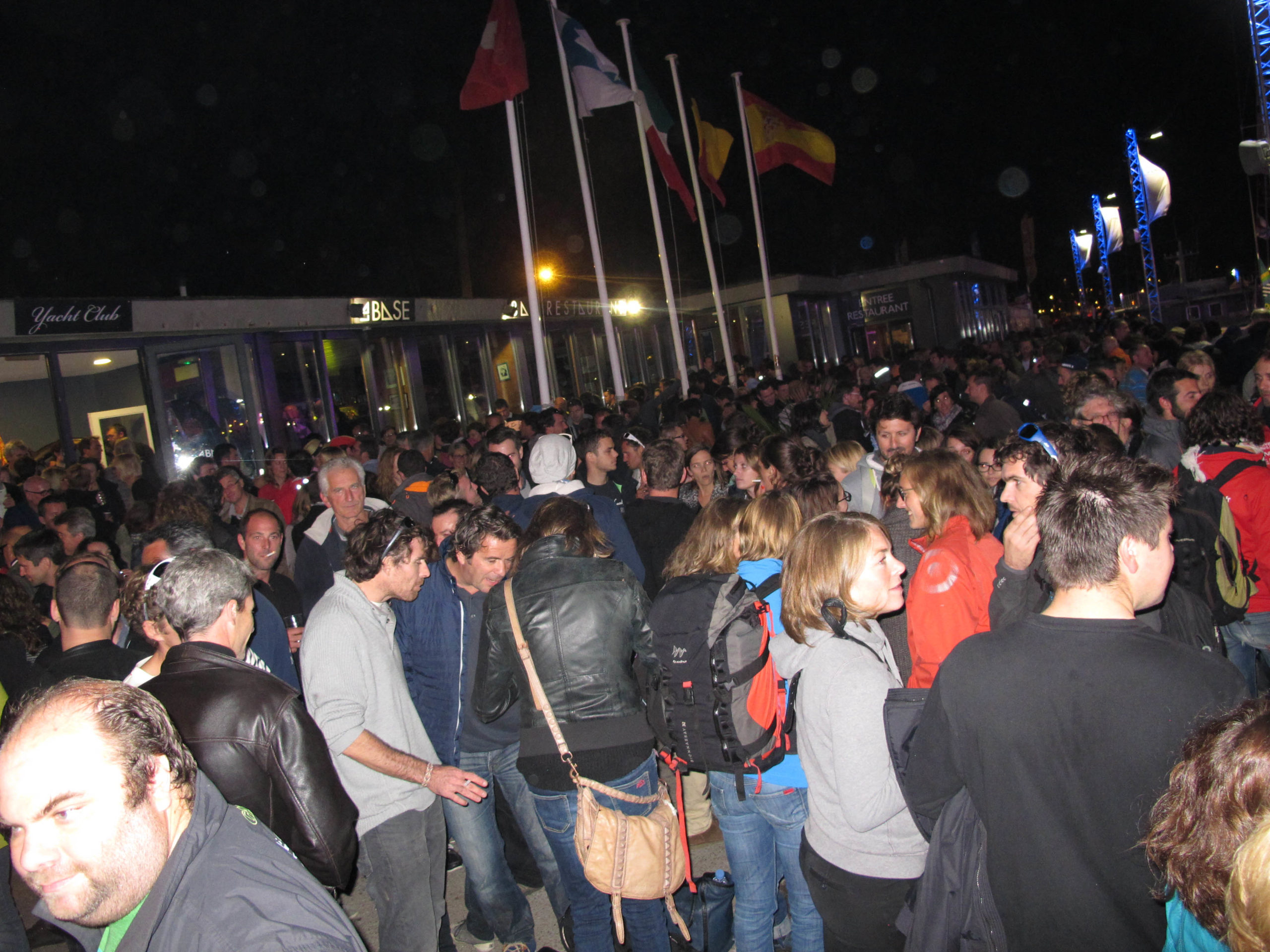
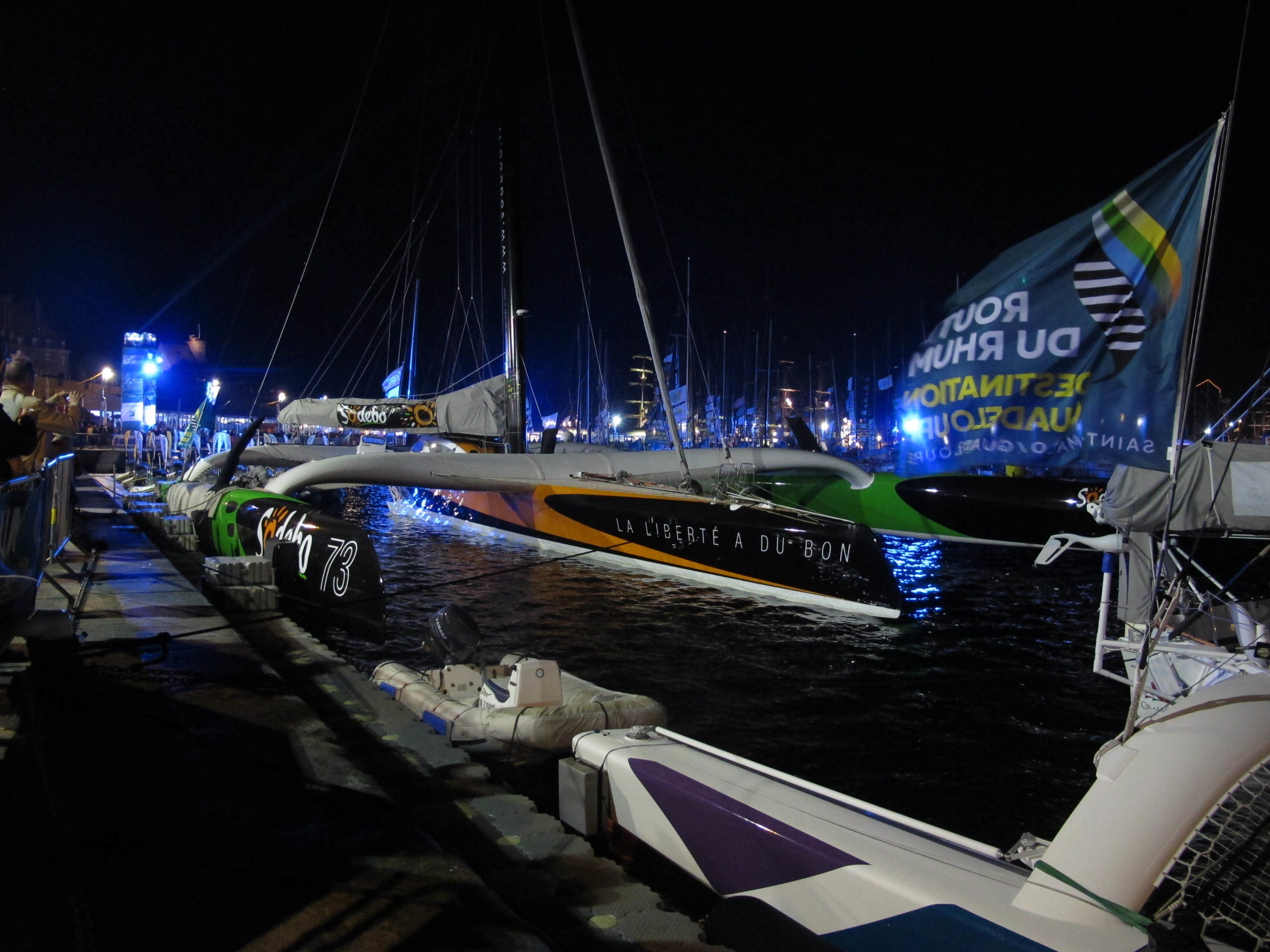

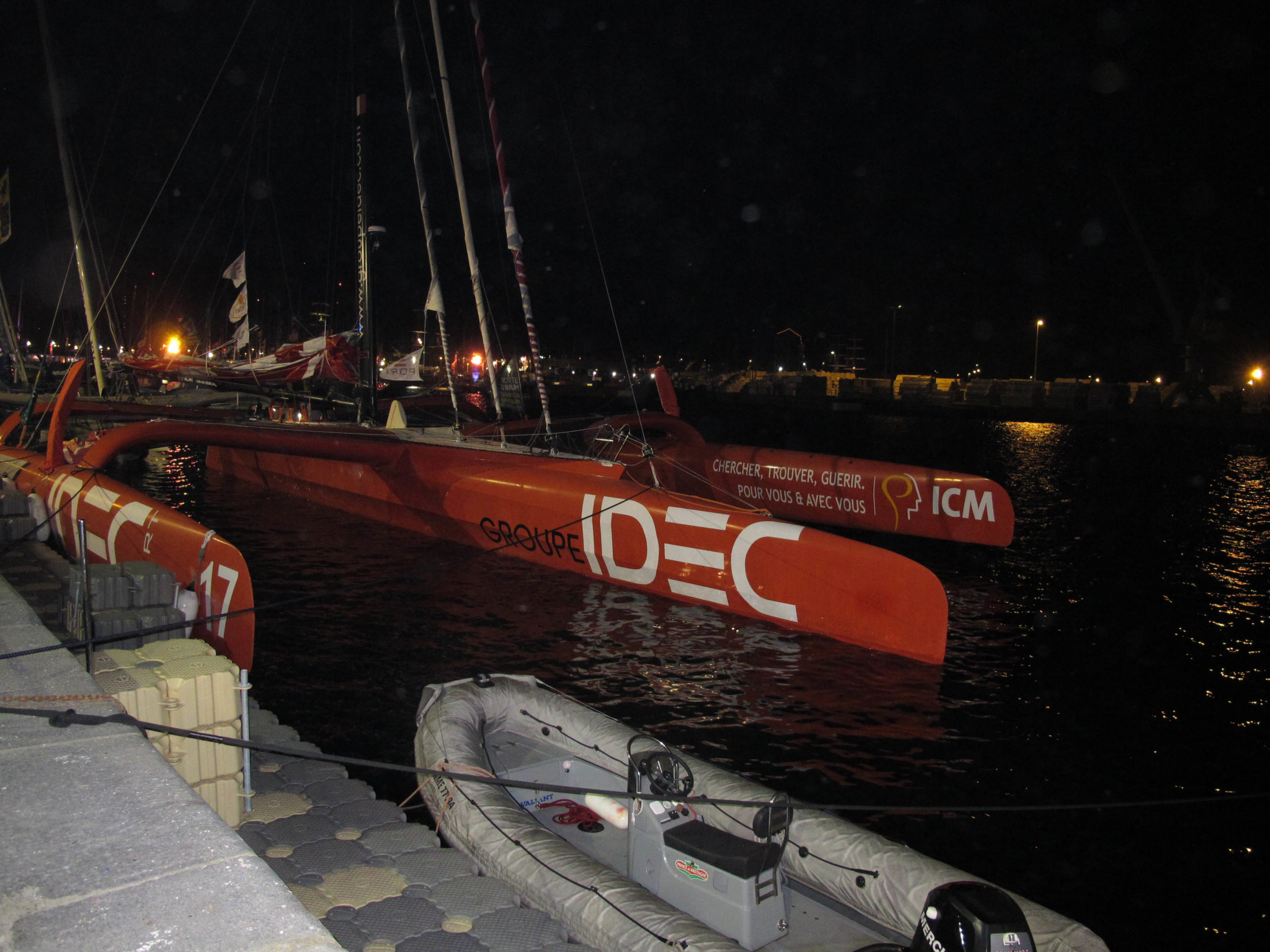
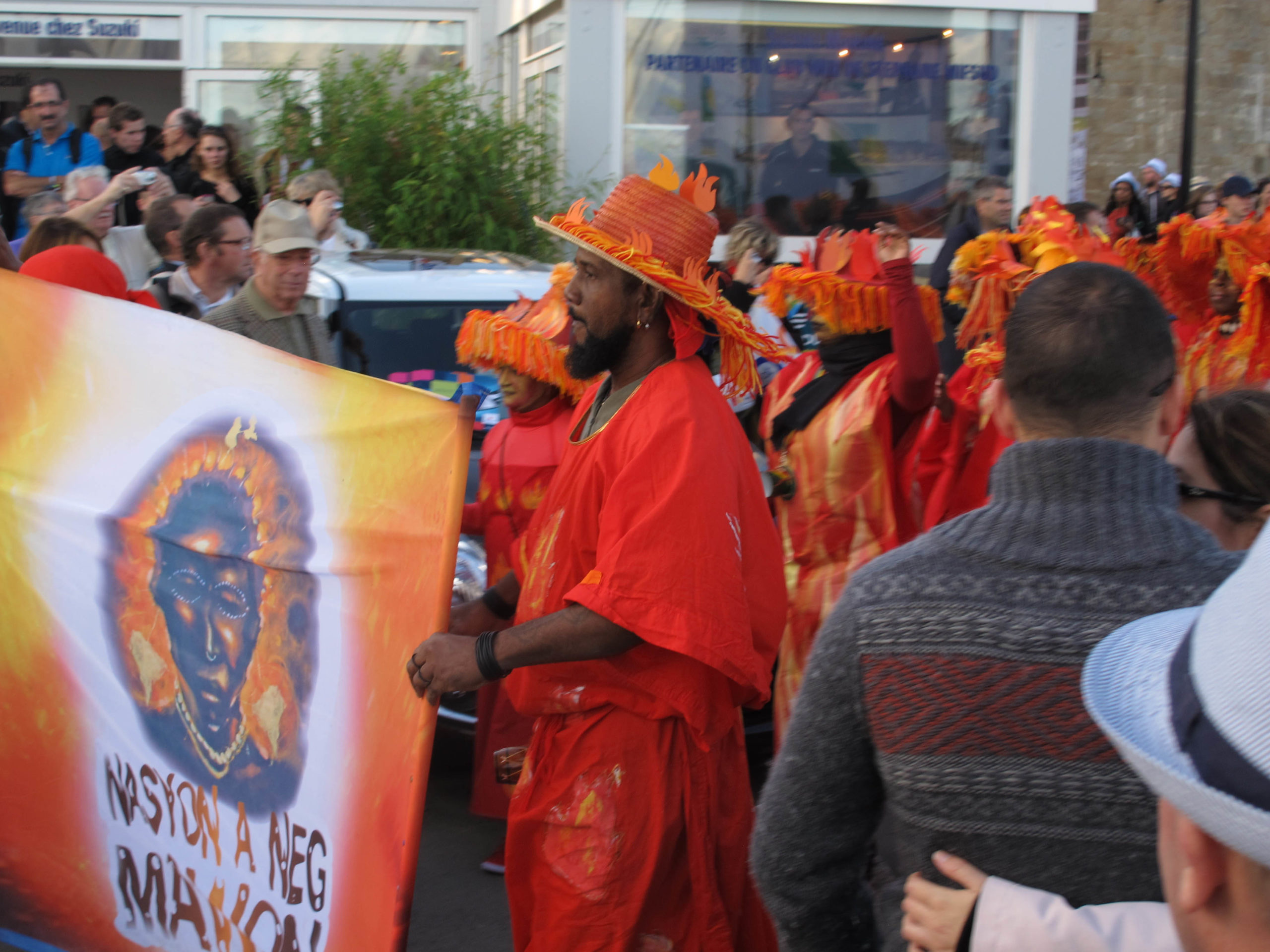
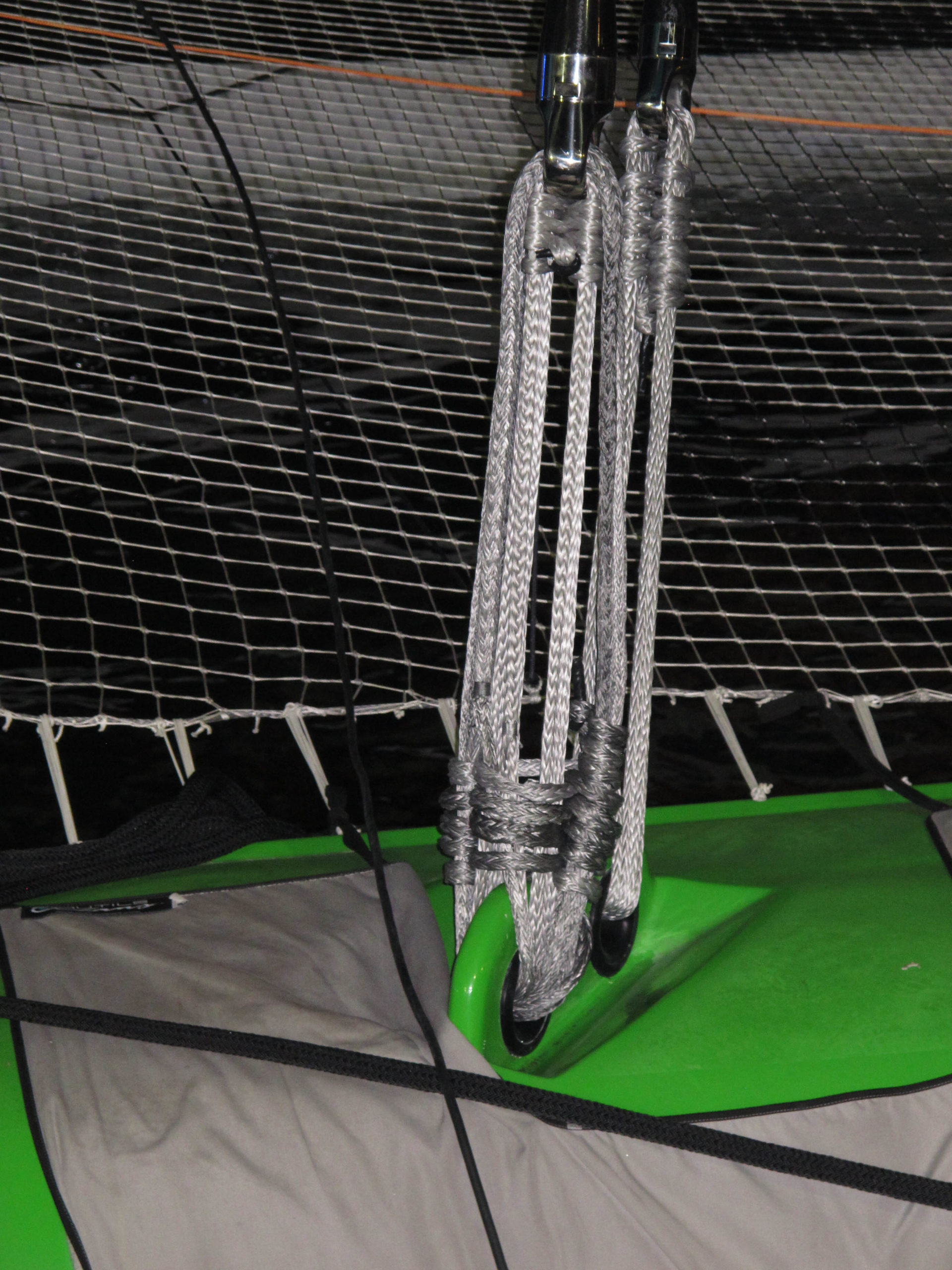
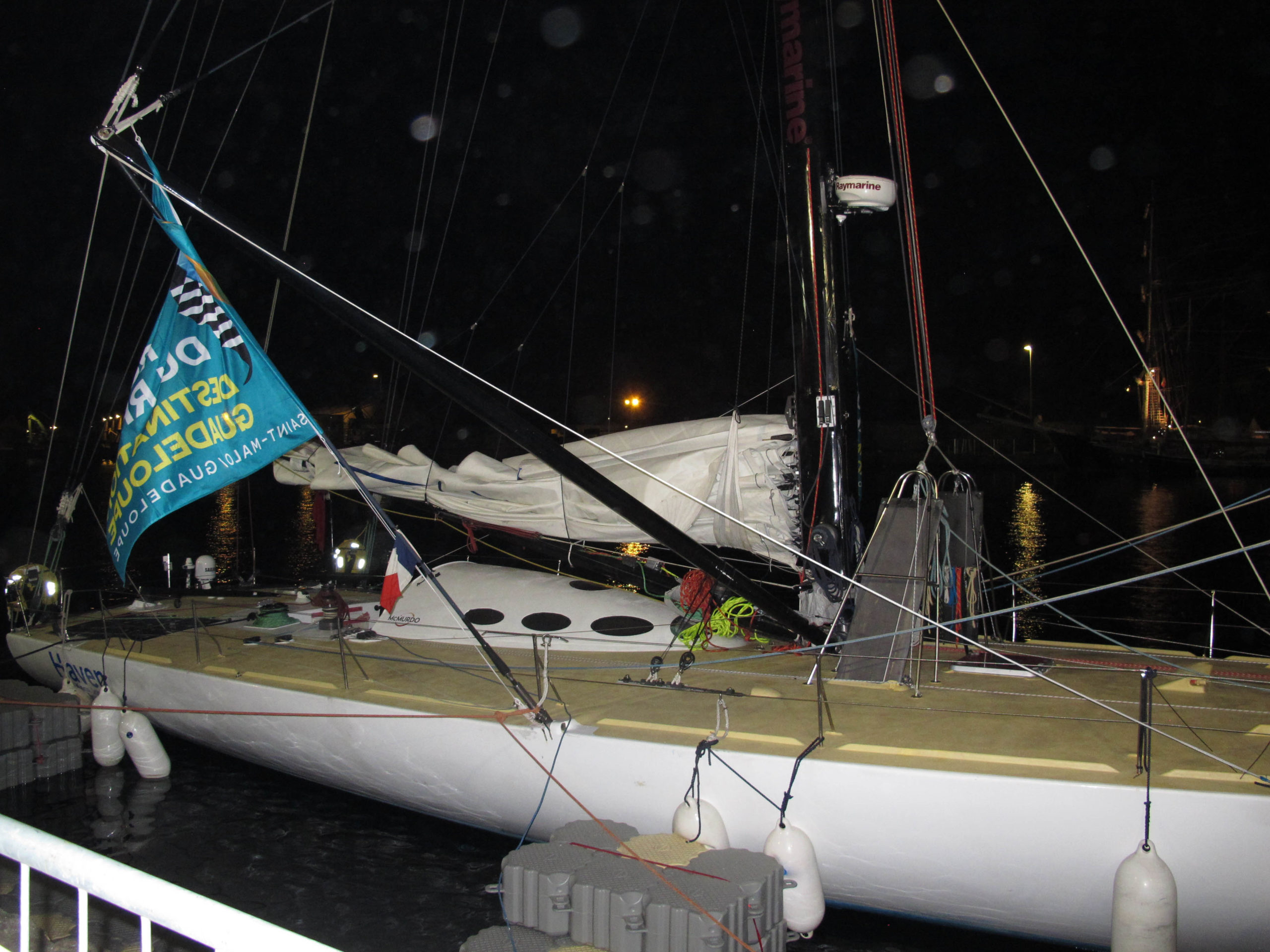
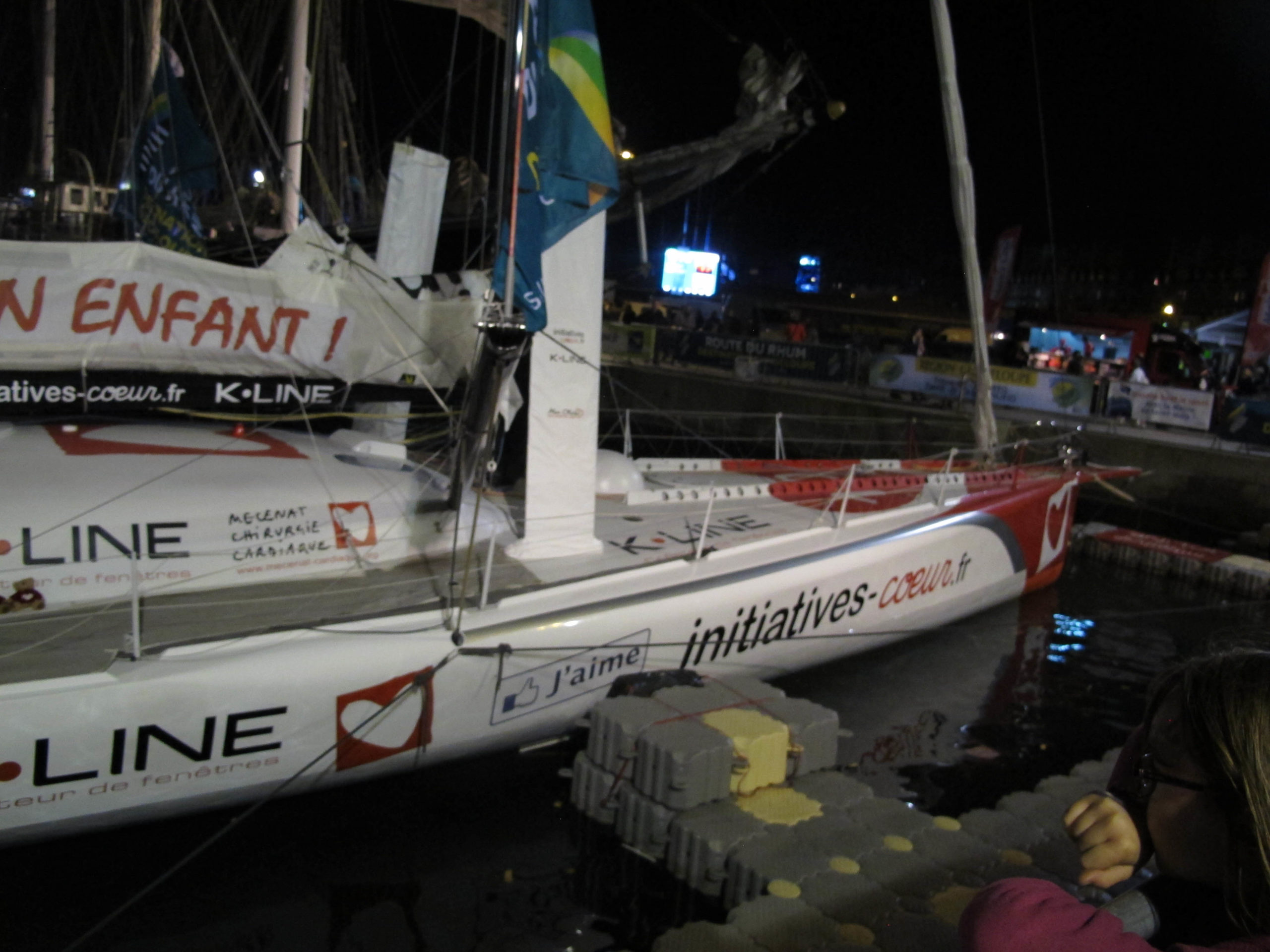

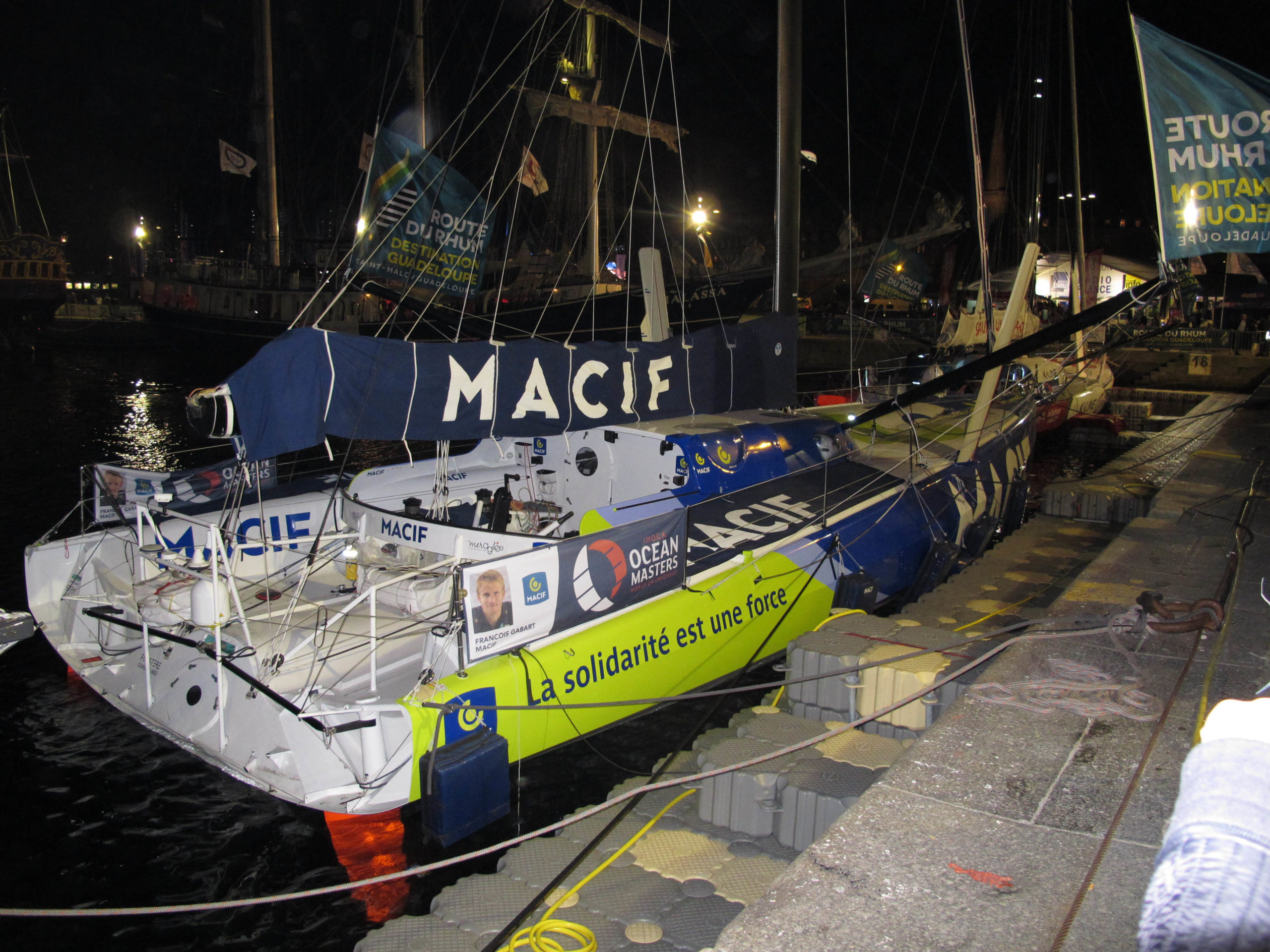
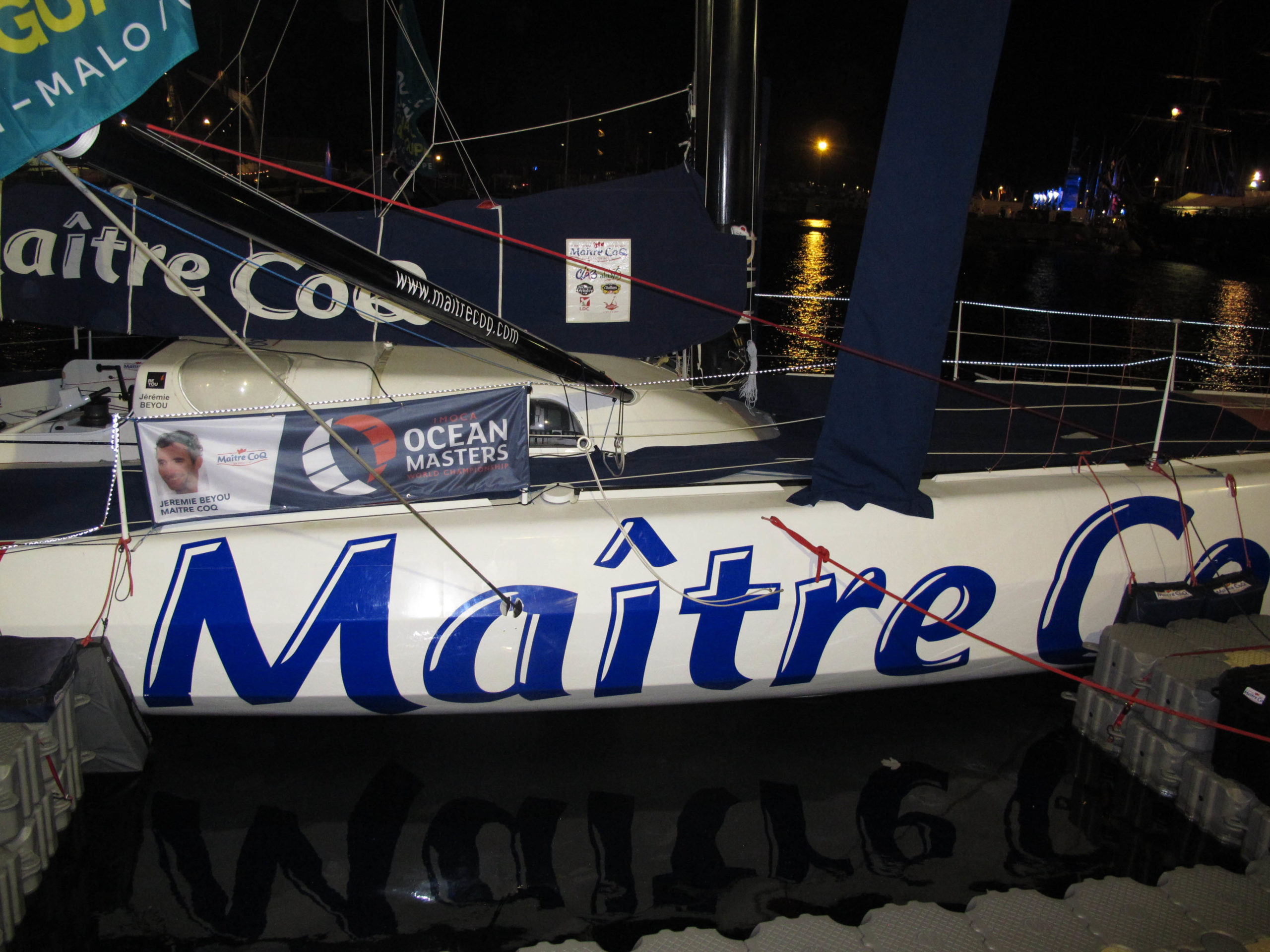
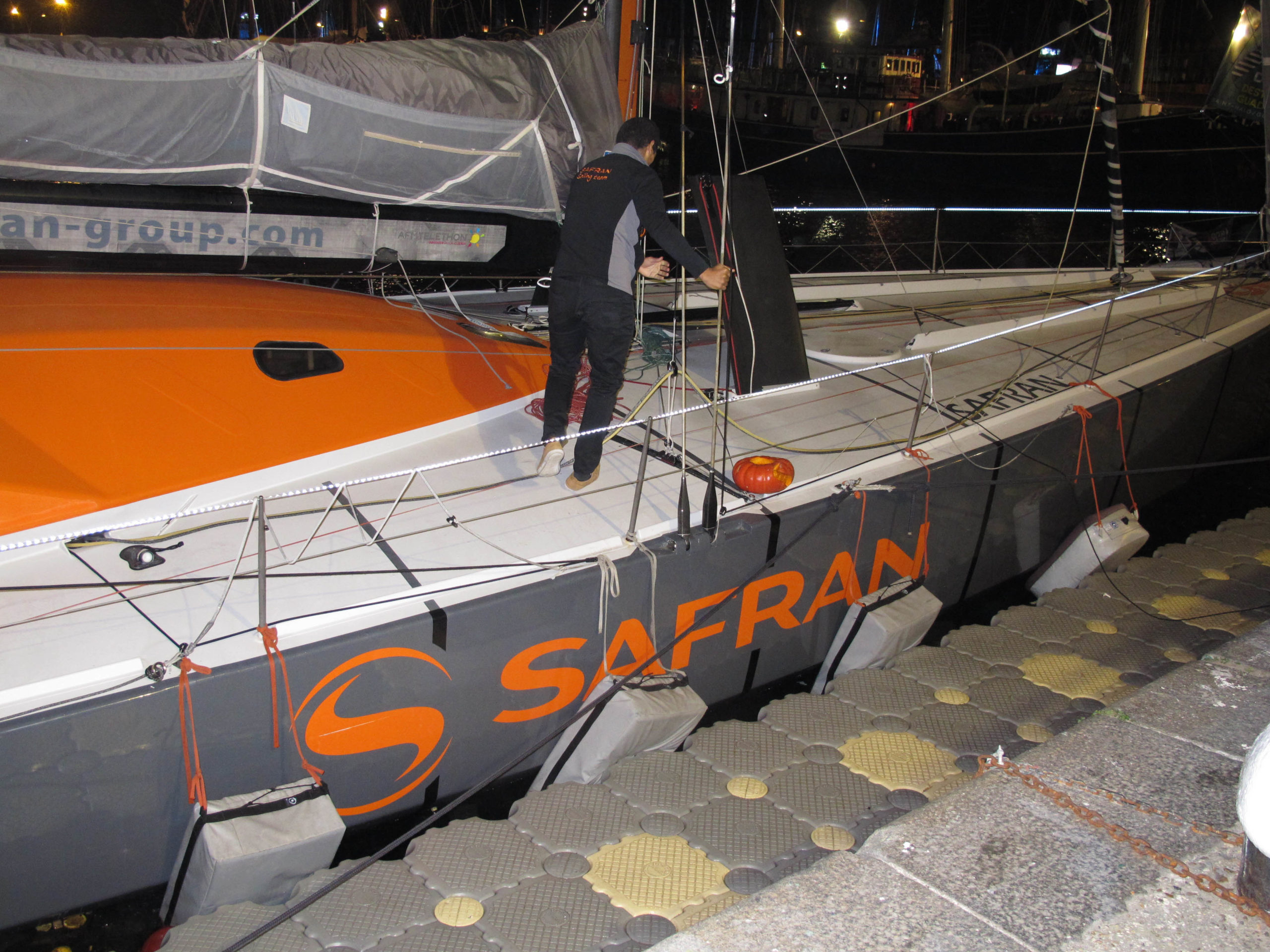



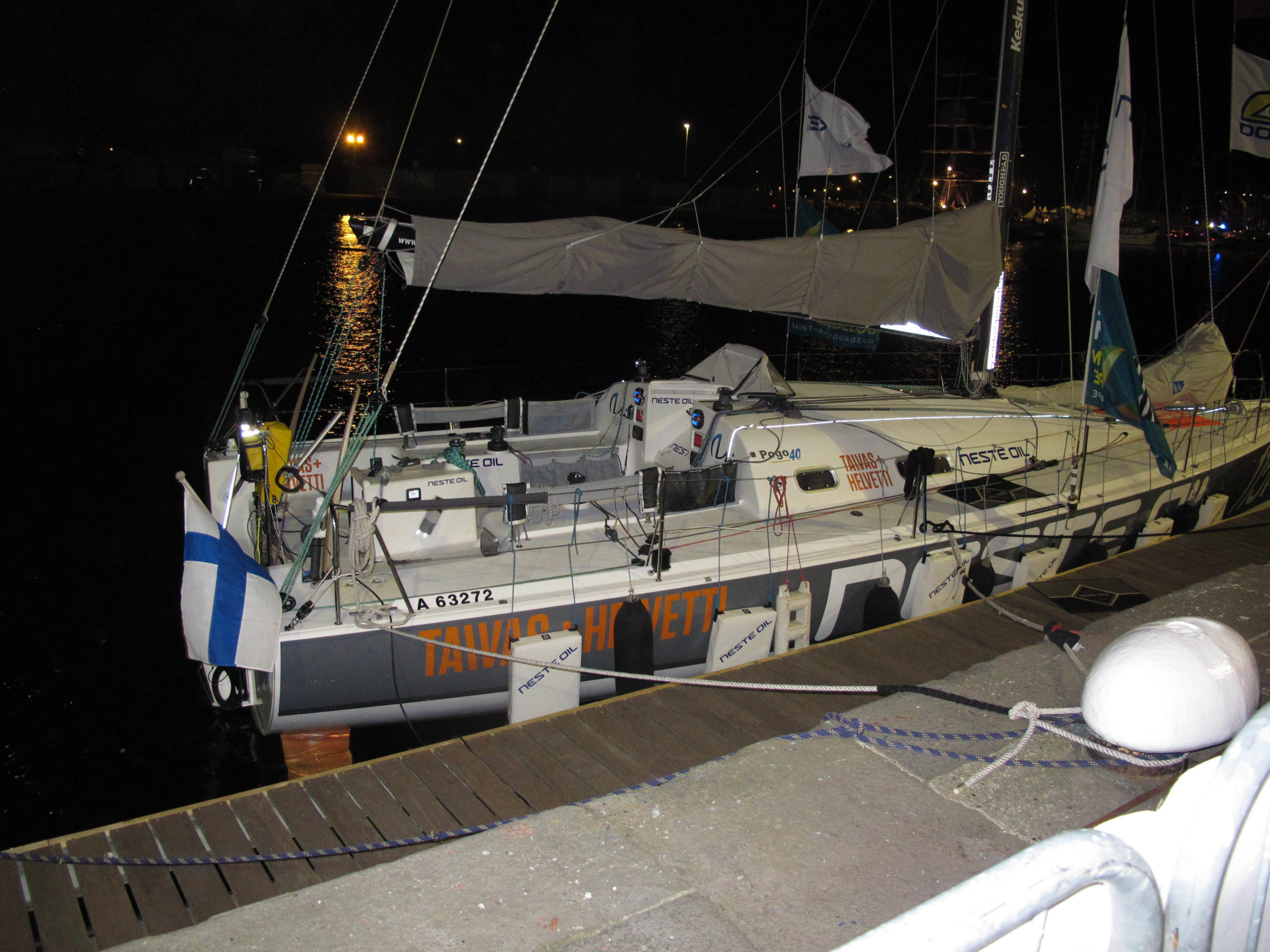
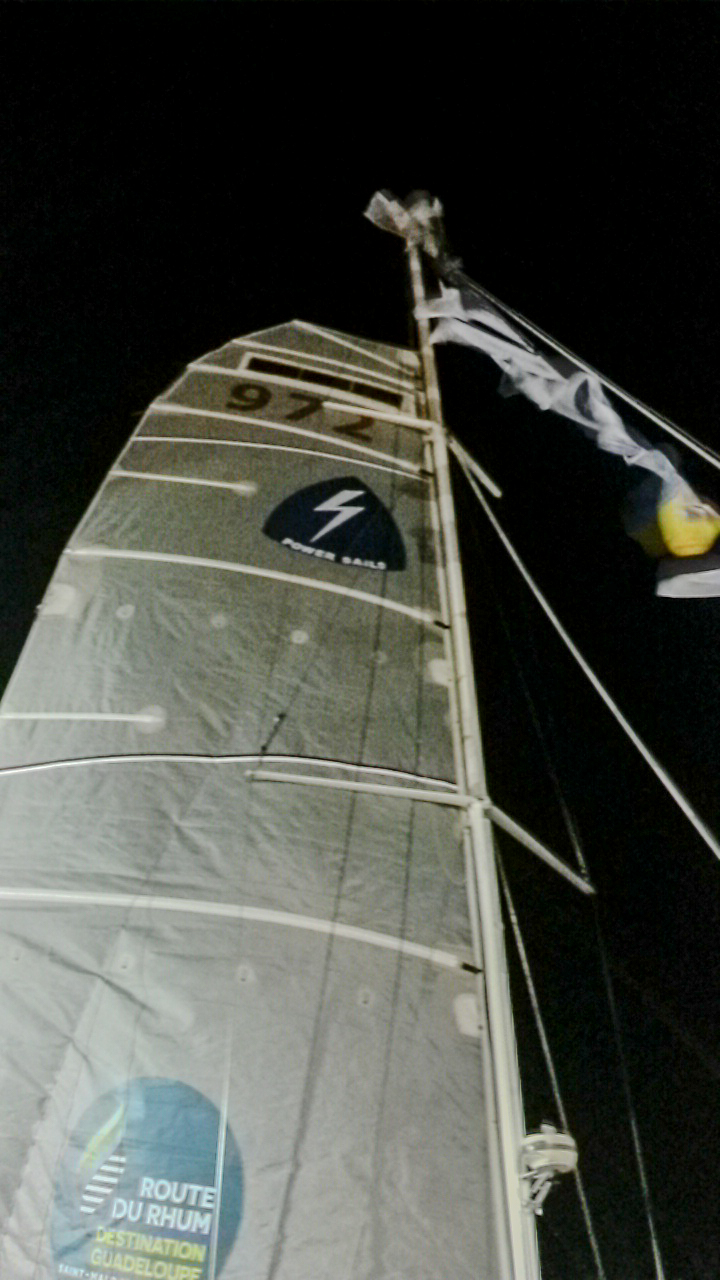
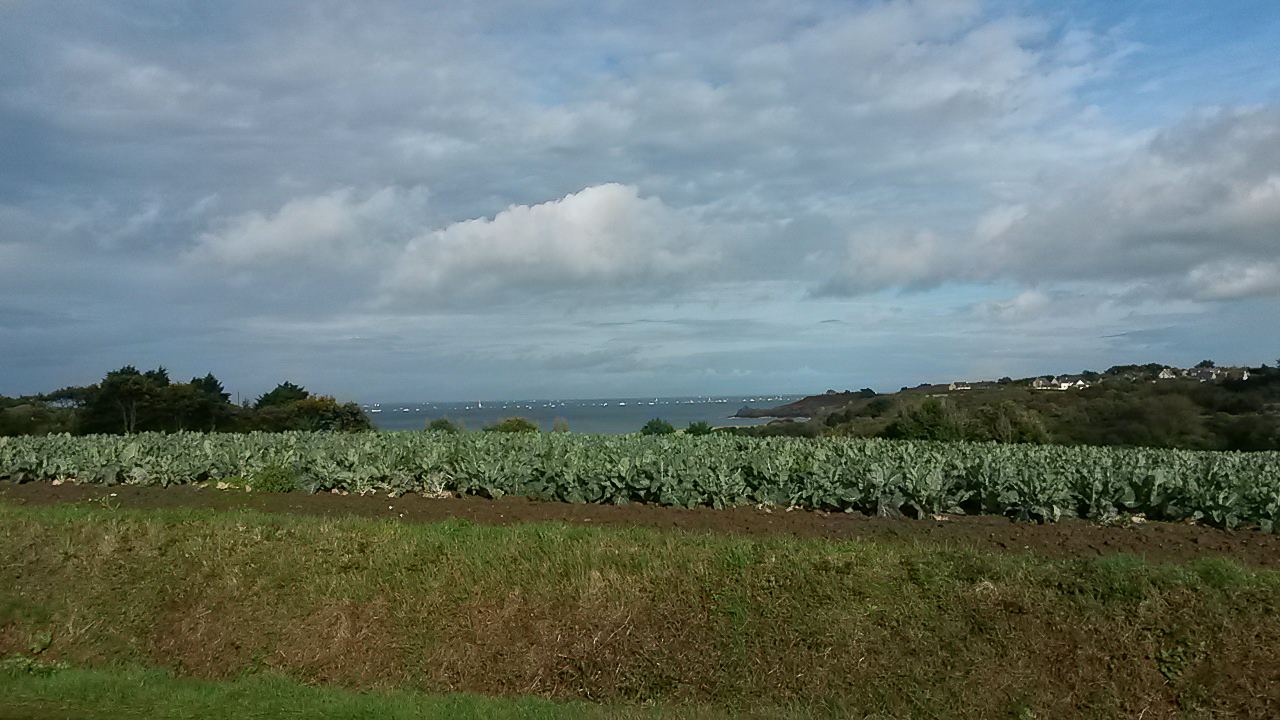
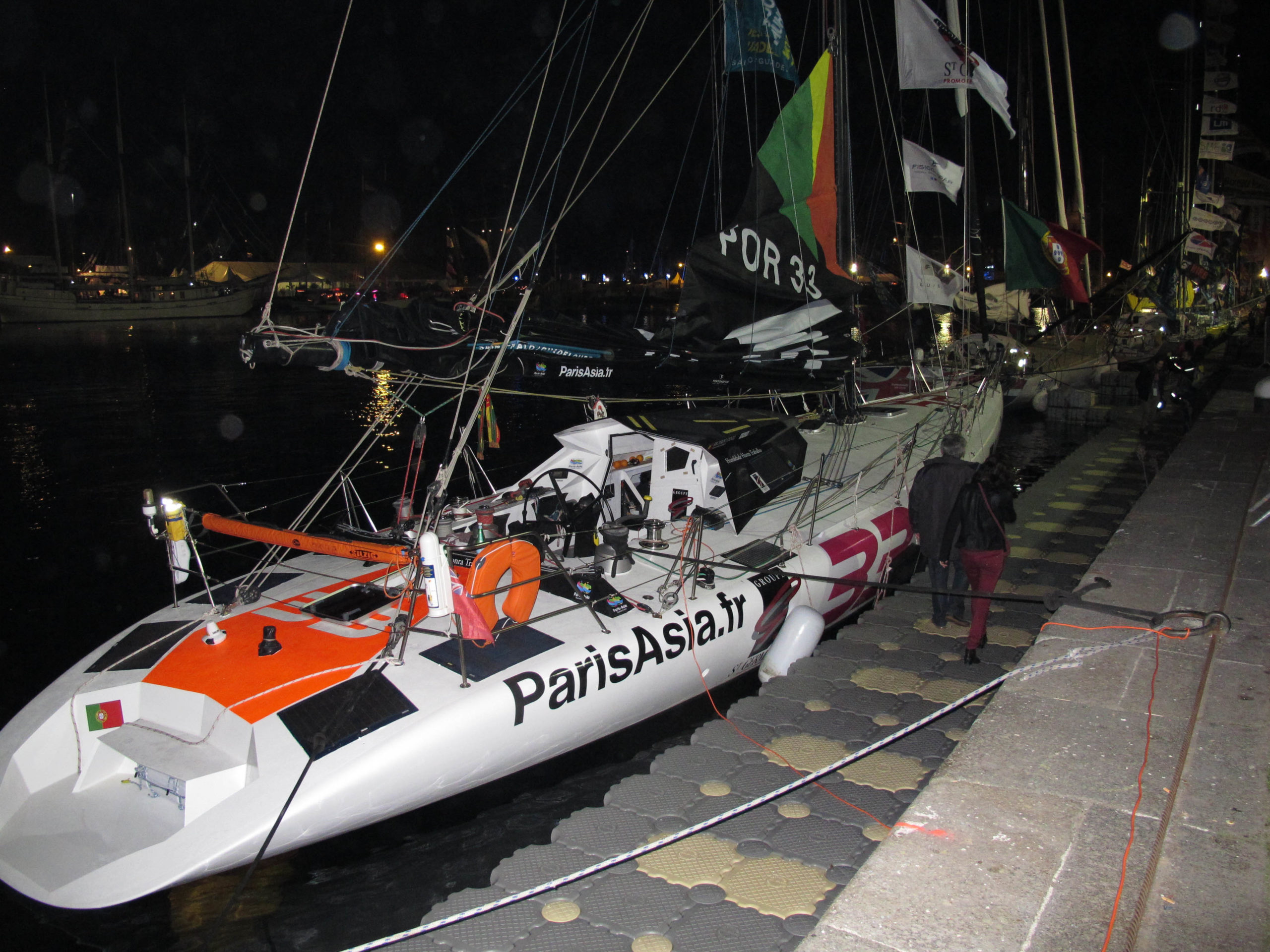
This interlocking set of gates means that it is particularly easy to walk around all of them. For the Route De Rhum the city basically shut down its streets and its commercial shipping (outside of the Ferries) and filled up the Basins with the 90 boats entered. That meant that by walking along the quays you could see each of the IMOCA, Classic and both trimaran fleets up close.
And to make the most of the marketing opportunity, 10 meters in from the edge of the quay were the exposition tents. All of the major entries from the Sultanate of Oman through some of the better funded Classe 40 monohull programs had their sponsor booths. Mixed in of course with the obligatory Bretagne (Brittany) biere, cider and crepe stands. And of course the main exposition hall was filled with everything Guadaloupe (from rum to coconut ice cream and huge tropical flowers).
French national radio and television was on hand – and according to the tourism board some 250,000 people came through St. Malo during the time these boats were there. I can tell you firsthand the quayside Friday and Saturday was mobbed.
So onto the boats. The first thing that struck me was the “classic” fleet – where some of the older competitors were out. Comparing them to the IMOCA and Classe 40s, its amazing how much notions of what is fast and seaworthy have changed. I marveled at the shapes that at one time someone thought were fast.
Which brings me to the IMOCA boats. These are increadibly powerful beasts with most of them running the familiar wide spreaders down low. But even here the variation between hull shapes and dagger board shapes was quite astonishing. And yet the boats did not seem to show that massive a difference in pace once out there.
Then of course there is the Maxi trimara fleet. What is amazing to me is how a single person can run these amazingly powerful machines. The photos you have seen, the videos you have seen, the photos in this article… simply do not do justice to the size of these monster boats. Here’s one way to think about it: Sodebos’ amas looked to be about as big as the one design RC 44 match racing boats. I had seen both Sodebo and Idek on the hard in Vannes earlier this summer and they seemed big then. But here in the harbor they both made other maxis like the venerable Edmond de Rothschild look small and flimsy
Also interesting was that the official support boats for the event were Zodiac RIBs powered by Suzuki engines with Suzuki cars as the official car. Truly revolutionary in a country like France.
Finally to the race itself. You can see a lot of photos of the start from helicopters and from chase boats. But there is something about watching it from shore with 40,000 other fans scattered along the rocky French coast that really brings it home. These amazing boats all powered up. In the Multi’s Sodebo and Banque Populaire lead the way. In the mono’s PRB was first off the line.
But in a perfect display of what makes this different than a fully crewed race – The reason for PRB’s launch off the line – a fully hoisted main – became a liability 15 minutes into the race when the winds went from 12-15 to 20-30 as a front with drenching rain blew in. In a crewed boat, they would have had the #3 teed up and done a quick inside out sail change and kept the lead. But single handed, depowering took at least 15 minutes – by which time PRB had fallen back to third.
As this gets published, it Loick Peyron is within 10 hrs of the finish, which would put him about 5 hours ahead of the current record. That’s 3,542 nautical miles in 7 days 13 hrs. That’s an average of 19.6 knots!!!
That’s a record a 70’ powerboat would be happy with given how rough the seas were across the Bay of Biscay. Bad enough that they broke off the front of one ama on the 50’ trimaran Maitre Jacque.
And this was also while dodging shipping traffic that at points would have been closing at 45 knots – traffic that the maxi tri Sodebo ended up colliding with.
Add to that that Loick Peyron wasn’t even slated to skipper this boat but was brought in as a last hour replacement for the injured original skipper a few weeks before the start, and the impressiveness of this win starts to come into perspective.